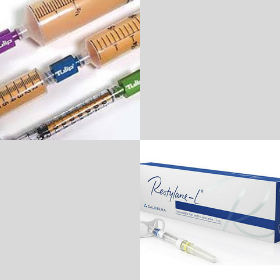Debating Facial Fat Transfer vs. Filler

Restoring lost volume to the face can take years off your appearance. However, too much volume in the wrong area or treating sections of the face independently will distort features, making them appear out of proportion. The best defense against this is to follow a comprehensive plan that addresses the face holistically, restoring balance, preserving movement—conservatively—so nothing seems out of sync. Results should be refined, like retouching a painting, creating a softer, more youthful appearance.
There are two subtleties many practitioners miss. The first is that the same amount of fullness at an older age will not look as good as it did in younger days. The other is in the approach treating thinner, looser skin. Though tempting, overfilling to compensate for sagging will cause the dreaded distortion most people seek to avoid. Volume should restore fullness, slightly lift sagginess and be age appropriate.
Fillers and fat transfer both treat lost volume. So, how do they differ and what are the pros and cons of each?
The Case for Fillers
FDA-approved dermal fillers include names that might sound familiar—Juvederm, Sculptra, Restylane, Radiesse—among others. While they are all synthetic “off the shelf” products, not all are created equal. Unique consistencies and longevity are associated with each. Lines between the eyebrows, hollowed out cheeks and temples, and thinning lips each respond best to a different type of filler, so the practitioner must be familiar with their relative concentrations, properties and optimal blend to get the best result.
The “pros” associated with fillers include their availability, consistency, immediate results and immunity to weight fluctuations. In addition, hyaluronic acid fillers are reversible—an antidote called hyaluronidase can dissolve the filler, mitigating risk. Bruising and downtime are generally considered minimal. The vast majority of dermal fillers are not permanent, so while the initial cost may be less than fat transfer, they require additional treatments over time to maintain the volume. In the right hands, fillers create a subtle, youthful change within a reasonable budget.
The Growing Trend Towards Fat
Fat is called the “natural” filler because it comes from your body. A small amount of fat is typically “harvested” by hand—generally from the abdomen or thigh. It is subsequently purified, emulsified and reinjected into the face. Fat is soft and very long lasting, if not permanent. With newer techniques, at least 50-60% of the fat “takes”. Recovery is longer than fillers (several days to a week) because of bruising and swelling. However, this short-term interruption may be outweighed by its additional anti-aging properties on the skin from stem cells. In essence, it impacts the overlying skin causing what some term a “Benjamin Button” effect.
Fat transfer is more labor intensive, thus more expensive than dermal fillers. It is essentially two procedures and is highly technique-dependent. But when you consider its inherent long-lasting nature, it can be less costly than fillers over time. Fat grafting is considered minimally-invasive and must be done in a sterile medical environment by a plastic surgeon or surgical dermatologist. Simply put, fat is trickier. To start, you must have enough fat for use. In addition, fat is living tissue, so it may respond to weight fluctuations, making the face appear plumper with weight gain.
What Fat and Fillers Share
In either case, technique and judgment must prevail. It is just as imperative to avoid the obvious overfilled look as you would a tight, pulled facelift. No one wants to look “done”. There are many less-than-qualified practitioners who are unwilling or unable to respect the boundaries between beautiful and bizarre.
There are also very real risks. Injecting into a vessel can cause tissue damage, or necrosis or visual impairment. So be smart. The debate between filler and fat is not as important as the choice of the professional who has the experience and expertise in safe technique, deep knowledge of relevant facial anatomy, and a keenly developed artistic eye to keep you safe and looking great.